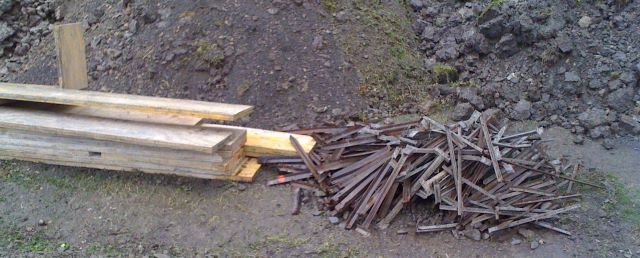According to REBRI, up to 50% of landfill comes from construction and demolition waste. The Havelock North Best Home, built by Horvath Homes for Hastings District Council, provides an inspirational example of how to reduce construction waste to a minimum.
Horvath Homes focused on both reducing the amount of waste produced and diverting as much waste as possible from landfill. They had economics in mind; the cost of skip hire and landfill disposal of construction waste is substantial.
How did they do it?
Construction manager Hugh Campbell was in charge of minimising waste. He prepared a short waste management plan before construction commenced. This identified the major sources of construction waste and where they could be recycled. He also briefed all subcontractors on the waste management requirements.
There was no skip for wastes to landfill. The only bin on site was for timber; all other wastes were piled up and removed quickly when produced. This meant that the site remained tidy, and the temptation to stick recyclables in the landfill bin was eliminated.
Off-cuts and other construction waste were sorted and weighed on site. Where possible, materials were re-used or recycled – either on this build or on other houses under construction – and only the remaining materials were sent to the landfill.
Many materials suppliers took responsibility for the wastes generated by their materials. For example
- Timber off-cuts were taken back by PlaceMakers, used for noggins, jack studs and blocking, and any remaining timber waste was used as fuel in the nearby Whirinaki Power Station
- Paint containers were taken back by the supplier for recycling, and waste water from paintbrushes was cleaned in a paint cleaning system.
- Plumbing and drainage offcuts were taken by the supplier.
- Polystyrene offcuts from the cladding were taken back by the supplier who returned them to the manufacturer for recycling.
Local recycling companies recycled cardboard, concrete, Linea weatherboards, plasterboard offcuts and plastics.
The results
The Havelock North Best Home has a total floor area of 186.68m2. In total, 15.15kg per m2 of floor area (2829.15kg) of waste was generated from the house’s construction. Of this, 95% (2696.15kg) of waste materials was diverted from landfill.
It is interesting to compare this to standard build houses – in this case, a study by Christchurch City Council of the construction waste produced in homes being built around the city (pre-earthquakes).
| Builder | Waste diverted from landfill | Waste to landfill |
| Best Home (Horvath) | 95% | 0.7 kg/m2 |
| GJ Gardner | 70% | 5 kg/m2 |
| Jennian Homes | 75.5% | 5 kg/m2 |
| Mike Greer Homes | 54% | 10 kg/m2 |
| Orange Homes | 60% | 9 kg.m2 |
| Stonewood Homes | 80% | 4 kg/m2 |
| David Reid Homes | 84% | 3 kg/m2 |
| Benchmark Homes | 82% | 4 kg/m2 |
| Golden Homes (steel framed) | 76% | 3 kg/m2 |
How did Horvath Homes get such a good result?
A critical factor in Horvath Home’s success was the strong commitment of the construction manager – and all the tradespeople working on the site – to sorting waste as it was generated, and making use of every possible recycling option. Clear briefings on the waste management objectives, the frequent on-site presence of the site manager, and good project management (in which waste reduction and recycling was an integral part of the project) explain why the waste management practices were so good.
Equally important was the absence of a general waste bin on the site. Waste to be sent to landfill had to be consciously sorted into a pile. This is a totally different approach to the normal waste management on a construction site where the large landfill skip is provided, making it easy – and tempting – to dispose of waste to landfill.
The availability of recycling options for plasterboard, concrete waste and timber were also critical to achieving such a good result – these three wastes represented nearly 79% of the total waste generation. Also impressive was the product stewardship approach of material suppliers which made a big contribution in terms of weight of waste recycled.
When the types of waste are analysed, two further points stand out. One is the absence of hazardous waste in the Havelock North Best Home, a positive result of careful selection of low VOC and non-toxic materials and products.
The second is that errors and rework generate substantial extra waste, even in this closely project-managed house. Over 58% of the waste produced was concrete/masonry. This reflected an error in the installation of a concrete thermal wall in the house, which then had to be completely reworked – creating an extra 900kg waste (31.8% of total waste generated).
